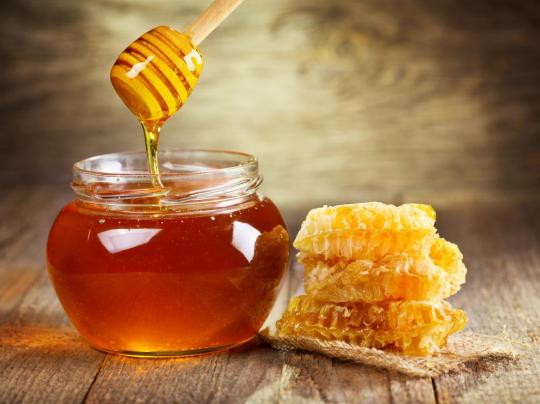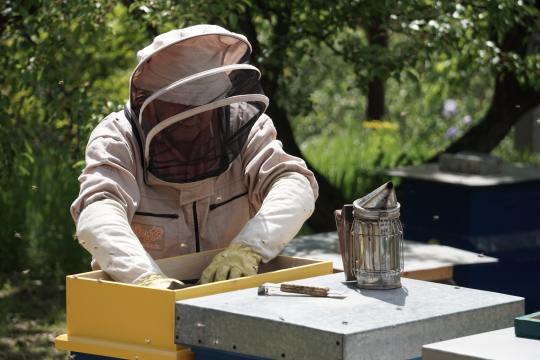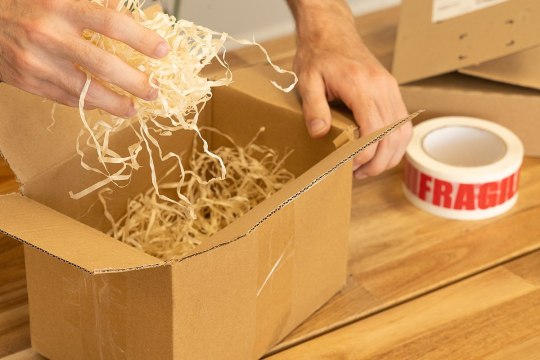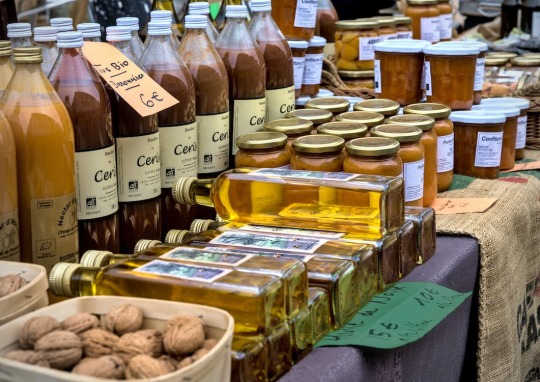#langstroth hive
Explore tagged Tumblr posts
Text

When we placed this Langstroth hive I didn't consider how much the weight of cherries would drag down the branches. It's going to be a little bit of a hassle to work on.
1 note
·
View note
Text
Saving wax the easy way
youtube
#ReefDVMs#RMSpeltz Farm#bees#bee#beehive#hive#hive spacer#Best bee hive#bee hive parts#best bees#mann lake#better bee#kids bee hive#italian bees#best hive#homesteading#best homesteading hives#best farm hive#bee farming#langstroth bee hive#langstroth#langstroth hive#ten frame#eight frame hives#honey#honey hive#top bar hive#solar wax melter#solar wax#wax melter
1 note
·
View note
Text

Still here!
#bees#beekeeper#beekeeping#fox#talks#honeybee#honeybees#honeycomb#honey#bee#hive#hives#long langstroth#langstroth#window#windows#access#door#natural#nature#bug#bugs#insect#insects
44 notes
·
View notes
Text
Lorenzo Langstroth unvarnished

Lorenzo Langstroth, 1890. From Langstroth on the hive & honey bee, rev. by Dadant. 1892.
December 25th, Christmas Day, is a day for sharing and giving. It also happens to be the birthday of a man known as the father of American beekeeping: Lorenzo Langstroth, born Philadelphia, Pennsylvania in 1810. With both happy occasions in mind, Mann Library is pleased to announce a resource that we’re pretty sure students of beekeeping and its history will find a wonderful gift: a fully digitized, searchable copy of Langstroth’s handwritten personal journal. Where a researcher would have once had to make an in-person trip to our special collections reading room to attempt a deciphering of Langstroth’s (infamously difficult to read) handwriting, the journal is now freely available (and actually readable!) as both a digitized version of the original work and in a transcribed form as part of the online Biodiversity Heritage Library.

Page from "Journal on matters relating to bees, etc.," unpublished manuscript, Lorenzo Langstroth 1852-1895. in the special collections of Albert R. Mann Library, Cornell University.
For those not yet fully in the know, Lorenzo Langstroth looms large in American beekeeping history thanks to discoveries and inventions he made as a self-taught apiarist, innovations which essentially revolutionized the 19th century practice of beekeeping in North America and facilitated its development into the profitable industry of today. His guide on beekeeping, The Hive and the Honeybee, was first published in 1853 and remains in print even today. Langstroth’s story is also poignantly notable for a reason that you don’t have to a be a beekeeper to appreciate deeply: his struggles with debilitating depression, which stymied many of his professional endeavors. While working intermittently as a pastor and teacher when his mental health allowed, Langstroth found constant, life-affirming inspiration in the bee world he observed closely through the prism of the hives he kept for most of his adult life.
The history of beekeeping stretches back to prehistoric times, but when Langstroth patented his movable frame beehive in 1852 it created a worldwide revolution in the practice of keeping bees. On this page of his journal, we see the exact moment—the “aha” moment—that Langstroth landed on his brilliant insight: the significance of applying the concept of "beespace" to design hives that allow easier harvesting of honey than possible in earlier hive structures. The rest, as they say, is history.
The journal Langstroth kept is a treasure for several reasons. It provides fascinating insight into pivotal moments of beekeeping’s technological history. It is, as well, an intimate view of resilience in face of sometimes devastating mental health challenges. And last but really not least, in the comments and pet peeves that Langstroth also recorded in his ongoing notes-to-self, his off-the-record writing offers a more mundane but no less instructive tour through the day-to-day concerns—from keeping bee hives productive to the vexing challenges of protecting trade secrets and securing patents for promising new discoveries in a timely way—that would have been top-of-mind for any aspiring agricultural entrepreneur of the 19th century.

Page from "Journal on matters relating to bees, etc.," unpublished manuscript, Lorenzo Langstroth 1852-1895. in the special collections of Albert R. Mann Library, Cornell University.
The online availability of Langstroth’s journal in both its handwritten and transcribed form has been a work very long in the making. When early 20th century entomologist Everett Franklin Phillipps joined the Cornell faculty 1924, he made it his mission to establish one of the world’s most important collections of beekeeping materials—now known as the E. F. Phillips Collection at Mann Library. Recognizing the importance of one of this collections’ gems—the Langstroth journal—for the beekeeping field, Phillips began the painstaking process of transcribing 600 pages of its cramped, highly slanted script—rendered even more illegible by the frequent ink bleed-through from other pages—into easily readable typescript. The project remained unfinished at the time of Phillips passing in 1951, and others took up the work intermittently over the following decades. But it wasn’t until the epic pandemic-era national lockdown of 2020 that intrepid collections specialist Betsy Elswit finally found herself with the time needed to finish transcribing of the journal's final 200 pages. Thanks to this heroic work, a browse through the work on the Biodiversity Diversity Heritage Library today provides a look at Langstroth’s original writing with a side-by-side view of transcribed, machine-readable text. Thank you Betsy! And thank you, Reverend Langstroth, for persevering through the inspirational highs and deep lows of life to impact the practice of beekeeping so profoundly, and to leave us such a rich record of such remarkable scientific observation and personal achievement.
And with that, we leave you with our best wishes for a good, hope-filled winter holiday season!
#Langstroth#beekeeping#beekeeper#apiculture#mann library#cornell university#rare books#vintage book#archives#mental health#agricultural history#special collections#bees#honey#apiary#honey bees
13 notes
·
View notes
Text

[ Image description: photograph of a device on a hotel breakfast counter. The device is holding a single Langstroth (I think?) frame of honeycomb in an upright position within a glass frame. There is a spout with a wood-handled ball valve in front, and a bowl underneath the spout to capture drips, which is partially filled with golden honey. The frame has no foundation installed, and the comb itself is dark brown and only partially uncapped. A small attached sign reads “Miel - honey”. End ID. ]
I am in Costa Rica on a student tour. In our hotel, there is this thing: I am pretty sure this is a honey subscription service with the Linda Vista Farm (and Apiary, obviously).
Costa Roca is very much into sustainability and eco-tourism, and it shows: to me, this display is perfect, and captures so much information about it in one compact package:
1) The lack of foundation: I think there are wires in their for support, but these bees are not being encouraged to build on foundation. They can do their own thing; imo this is good. Plus, the support that a beekeeper might need to provide if they’re going to extract the honey by spinning the frames is not needed here. You can see the beeways that the bees have built for themselves to transit between combs, which is neat.
2) The color of the wax: fresh wax is light gold in color, so this dark brown wax is old. These frames are being reused, which totally makes sense for a subscription service for this dispenser, and if that’s what they’re doing, I suspect that you just turn in an empty frame for a full one (or maybe you get a whole hive body of 10 frames). The benefit of this for the bees is that they don’t have to rebuild the frames (making wax is metabolically expensive). Cons, though, could be that diseases might be transmitted this way, especially if the frame goes into a different colony’s hive.
3) Most of the cells were uncapped. I think that the hotel staff uncaps sections of the comb as needed, rather than the whole thing at once, which I think would flood the device.
It’s just absolutely brilliant; I cannot stop thinking about it.
If you’re a beekeeper, especially if you’re from Costa Rica and/or know more about La Granja Linda Vista, please reblog and add your thoughts!
2 notes
·
View notes
Note
For your WIP game, how about 'steady' or 'playful'?
Thank you for the words! No hits for 'playful', but I can give you 'play' while they're feeling playful! Both from Langstroth on Bees.
Play(ful):
We made our way back to our cottage, casting each other sly and bemused glances, both of us feeling inordinately foolish with the joy of our squandered morning. In fact, I planned to squander quite the remainder of it, if he let me. Unfortunately, he was temperamental enough to play the coquette and spend the rest of the morning with his hives, simply for the pleasure of leaving me longing for him. I hoped that this morning he would spare me.
Steady:
"Oh, give me strength," I muttered, and marked my page. I took refuge from his agitation in our workroom, well out of the orbit of his pacing. There, I tried to lose myself in the steady rhythm of saw, chisel, and sandpaper -- working not on his gift, but something I could afford to ruin with a careless slip of the chisel -- but I only found myself stewing in my irritation, muttering imprecations against him as I worked.
#wip meme#langstroth on bees#how I will ever play this game after I publish langstroth and do not have it to draw upon#I do not know
6 notes
·
View notes
Text
The Buzz on Honey Bees and Their Business
The Buzz on Honey Bees and Their Business: Selling Honey Equipment Online

The honey bee, a small insect with a vital role in our ecosystem, has increasingly become the center of attention not just for its environmental significance, but for its burgeoning business opportunities. If you're passionate about honey bees and want to delve into the world of honey-making, then the online market has a plethora of equipment and tools to get you started. From essential beekeeping supplies to those crucial finishing touches like heat shrink bands for jars and bottles, you're just a click away from starting your honey business.
Understanding the Honey Bee Business
Before diving into the types of equipment you can sell online, it's crucial to understand the honey bee business. As these industrious creatures collect nectar, they produce honey—a sweet, golden liquid loved by many. But turning that liquid gold into a market-ready product requires specific tools and techniques.
Essential Equipment for Honey Extraction
Beehives: The primary home for your honey bees. They come in various styles, but the most common are the Langstroth and Top-bar hives.
Bee Suits: These protective suits ensure beekeepers can handle their bees without the risk of stings.

Smokers: Used to calm bees during hive inspections.
Honey Extractors: A device that spins frames, extracting honey without damaging the honeycombs.
Perfecting the Packaging Process
Once you've successfully harvested your honey, the next step is packaging. This is where details like shrink wrap bands for jars come in.

Glass Jars and Bottles: When we muse about honey, the quintessential, timeless packaging we think of? That's right. Glass. They stretch across the spectrum in sizes, some tiny like a delicate thimble, others hefty, holding treasures of amber nectar. Shapes? Oh, they dance from conventional rounds to eclectic hexagons. Catering to the ever-evolving market, they stand resolute, each telling its tale.
Heat Shrink Bands for Jars and Bottles: You've seen heat shrink bands for bottles. Perhaps, without much thought. But, ever think of the genius behind these slender bands? Once dormant, with a hint of heat, they snap into action. Hugging your bottle or jar's neck, they promise safety, scream professionalism. Tamper? Think twice. These heat shrink bands for jars are guardians; their mere presence a challenge to any foul play.

Labels: Imagine walking through an aisle, and a myriad of jars beckon. What makes you pause, tilt your head and reach out? Often, it’s that piece of art draped around the bottle: The label. More than just a sticky piece of paper, it’s a canvas that whispers tales of the golden liquid within. And more than that, it often sings songs of the brand's ethos, legacy, and promises.
Selling Equipment Online:
Fancy a dive into the lucrative world of online honey-equipment sales? A realm awaits. You see, the beekeeper's world isn’t just filled with buzzing. Be it the newbie next door or the seasoned pro from the valley, they’re all scouring for top-notch gear. And while the basics hold their ground, why not sprinkle your inventory with diverse, vibrant heat shrink bands? Every hue, every size. And, to spice things up, keep an eye on the beekeeping vogue. Evolve, adapt, and stay a buzz ahead.

Conclusion:
It’s not just about the hum and the honey. The bee business? It’s a tapestry. Threads of art, science, and commerce intertwining. And as for success? Well, get the gear right. Whether it’s a state-of-the-art extractor or a humble heat shrink band, every cog matters. The golden road to triumph? Just around the corner.
Here's to the art of beekeeping and the sweet symphony it brings! Cheers!
2 notes
·
View notes
Text
Gonna add onto this as a beekeper myself.
ehh, i'd say you can abuse honey bees with harmful beekeeping practices. But they also WILL LEAVE if they want to. (them doing so is called absconding)
i do not have any sources other than my personal opinion, experience, and gathered knowledge from various in person lectures from beekeepers with doctorates over the last couple years.
You can be neglectful and harmful to your beehives. Many beekeepers rob as much honey as they can from their hives, resulting in increased losses of colonies. And you the beeekeeper going inside their hive to inspect is a pretty large stressor on that colony. You want to be as quick as you can and as careful as you can to minimize the stress you are inflicting. (how would you like it if someone tore apart your house, rearranged it, left your walls unsealed and with drafts, killed several if not dozens of your housemates in the process of putting the house back together, and then you were stuck with the repair bill? not happy i presume.)
The majority of beekeeping research is aimed to maximise honey production, not quality of honey bees. and even then the quality of a queen is typically not judged on her survival, but in fact how much honey her colony produces, how "productive" her colony is. Swarming is discouraged because A it leaves the mother hive vulnerable to collapsing if the new queen is eaten while on a mating flight, but MAINLY for B, the loss of honey production durring the spring nectar flows because of reduced workforce.
Thats not to start on how the breeding for maximized honey production has likely led to increased vulnerability to varroa mites, or how the thermodynamics of a Langstroth hive set up is actually really un-beneficial to the bees.
As much as the bee movie got wrong, big time commercial beekeepers robbing honeybees to their detriment was the one of the very very few things it got right.
But its not the scientists doing this research's fault. They have to apply for grants and give a reason for why the research is being done. And if they dont appeal to those giving them the money, they cant do large scale professional research.
Anyway. it is a very nuanced topic. There is no strict yes or no answer.
(PS. if the honey that you are buying does not say raw honey, it has likely been either adulterated [made from feeding honeybeess sugar water, or actually cut with something like corn syrup], or has been processed in a way that ends up removing all the benefits of honey. the best honey to buy is honey from a local source and ideally one that you know the beekeeping practices of!)
Wild that folks keep saying beekeepers abuse bees as if bees are not both venomous flying animals and fully unionized
#beekeeping#honeybees#actually a beekeeper#not an expert#but i do keep myself educated and currently have some hives#THAT HAVEN'T DIED OUT!#:D#something really amazing since beekeepers have had 70% colony losses this year
170K notes
·
View notes
Text
Our oldest pie cherry tree is like catnip for bees. This is the second feral swarm that we've seen in it this year and the third swarm that's been there, so far. The first one ended up being a successful split from our top bar hive and we got them moved into the Langstroth without a hitch.
The first feral swarm stung my partner up pretty badly and then didn't even stick around. This one may have stuck, though. It looks like more of them are going in than coming out and the swarm remnant on the cherry tree is getting smaller.
Cool. Even more free bees. Treat your first package right and be ready to recapture feral swarms and you'll never run out of bees.

12 notes
·
View notes
Text
Honey coming in full force into the farm
Honey coming in full force into the farm
youtube
#ReefDVMs#RMSpeltz Farm#Bee#bee hive#cover#super#brood box#queen excluder#base#bee keeping#inner cover#bee hive education#langstroth hive#langstroth box#italian bees#dij camera#bee hive parts#understanding bee hive#learning bees#best hive box#best bees#best hive#hive brush#bee hive brush#hive smoker#bee tool#bee hive tool#beginners beekeeping#beekeeping#basic beekeeping
0 notes
Text
There are literally giant bee farming companies that feed their bees Mountain Dew when flowers are out of season
Can you imagine expecting ANY animal to survive off of Mountain Dew and think that that's okay
These companies also keep their beehives all in one place, and the hives are all the same. Bees need their hives to be differently colored or shaped or placed, so they can identify which hive they live in. Keeping them so close together confuses the bees, which causes population drift, which helps spread disease and parasites
These hives are also generally an inferior version Langstroth hives, which were originally designed to give the bees sufficient space and insulation, but which the mass-produced, basically-made-of-plywood modern versions do not. The bees living in these conditions are often killed by cold, and also by being transported throughout the year to different monocrop farms.
The beekeepers treat mass murdering and then replacing at least half their bees every year as a regular business expense
vegans making honey a bee labour issue is the funniest thing imaginable because like, you picked the one animal that has already unionised
140K notes
·
View notes
Text
Smart Beekeeping Revolution: Beehive Monitoring Systems, Safety Tips, and IoT’s Crucial Role

Beekeeping, one of the most critical contributors to ecological balance and agriculture, is undergoing a quiet revolution. With environmental challenges, dwindling bee populations, and increasing awareness about sustainability, beehive monitoring systems powered by the Internet of Things (IoT) are fast becoming indispensable to modern apiculture.
This blog delves deep into the methods of beekeeping, the exclusive role of IoT in saving beekeeping, and outlines how to scrutinize the best safety tips for moving beehives effectively. Whether you're a seasoned apiarist or just beginning your beekeeping journey, this guide offers expert insights to future-proof your hive management practices.
What is a Beehive Monitoring System?
A beehive monitoring system is a tech-enabled solution that allows beekeepers to track and assess the internal conditions of a hive in real-time. These systems use smart sensors to monitor:
Hive temperature and humidity
Bee activity and movement
Weight changes in the hive
Sound frequency and vibrations
External weather conditions
The data collected helps beekeepers take timely actions, ensuring the health of the bees and increasing honey yields. In regions with erratic climates or high pesticide exposure, these systems are becoming the backbone of sustainable apiculture.
The Evolution of Beekeeping: From Tradition to Technology
Traditional methods of beekeeping were heavily dependent on manual observation, seasonal knowledge, and instinct. While these methods are still valuable, they often fall short in the face of climate unpredictability, urban expansion, and diseases like Colony Collapse Disorder (CCD).
Modern beekeeping integrates:
Langstroth and Top-Bar Hives: Modular hives designed for easy inspection and management.
Bee Feeding Systems: Controlled feeding using sugar syrup or supplements during scarce seasons.
Integrated Pest Management (IPM): Non-toxic solutions to control pests like Varroa mites.
Smart Beehive Monitoring Devices: Solar-powered, GSM-enabled units that provide real-time hive updates.
The result is higher productivity, lower colony loss, and more confidence among beekeepers.
An Exclusive Role of IoT in Saving Beekeeping
The Internet of Things (IoT) has taken center stage in reshaping the beekeeping industry. Its exclusive role in saving beekeeping lies in real-time data collection and actionable insights that significantly reduce human error and maximize efficiency.
Key IoT Features Supporting Beekeeping:
Real-Time Alerts IoT systems notify beekeepers instantly if hive conditions deteriorate or if threats like intrusions, over-heating, or swarming arise.
Remote Monitoring Beekeepers can monitor hives located in remote areas via mobile apps or dashboards.
Data Analytics & AI Integration Patterns in bee behavior, honey production, or pest infestations can be detected early using machine learning algorithms.
Climate Adaptability IoT helps anticipate environmental changes and prepare hives accordingly, essential in an era of global warming.
By leveraging IoT, beekeepers can intervene proactively, reduce colony stress, and ensure better pollination outcomes, a win-win for both agriculture and ecology.
Scrutinize the Best Safety Tips for Moving Beehives
Relocating a beehive is often essential due to urban development, climate changes, or colony management needs. However, moving a hive requires detailed planning to avoid stress, disorientation, or harm to the bees.
Here’s how to scrutinize the best safety tips for moving beehives:
1. Choose the Right Time
Move hives at night or early morning when bees are less active.
Avoid relocating during extreme weather or the peak nectar flow season.
2. Secure the Hive Structure
Use ratchet straps to tightly secure the hive boxes.
Seal all hive entrances using mesh screens to ensure airflow but prevent escape.
3. Minimize Movement Shocks
Place the hive in the transport vehicle on a flat, cushioned surface.
Drive slowly to avoid sudden jolts or vibrations.
4. Ensure Ventilation
During long moves, proper ventilation is vital to prevent overheating and suffocation.
5. Reorientation Techniques
After relocation, place twigs or branches at the hive entrance to trigger reorientation behavior.
Wait 2-3 days before allowing free flight to reduce disorientation.
6. Use IoT for Post-Move Monitoring
Post-move, monitor hive metrics using IoT systems to quickly detect signs of stress or aggression.
By following these safety measures, beekeepers can protect their colony’s health and productivity during transitions.
Top Use Cases of IoT-Powered Beehive Monitoring Systems
Commercial Honey Production Predict harvest times and maximize honey yield with temperature and weight data.
Pollination Services Optimize timing for pollination contracts by knowing when colonies are at peak strength.
Research & Development Universities and agri-tech companies use IoT to study bee behavior and develop new methods.
Urban Beekeeping Cities like New York and London now integrate beehive sensors on rooftops for eco-friendly practices. In-Depth Look at Traditional vs. Modern Methods of Beekeeping
While technology is transforming apiculture, traditional methods of beekeeping still offer valuable practices, especially for small-scale or organic operations.
Traditional Beekeeping Methods:
Fixed-comb Hives: Often made from mud or wood, these are inexpensive but hard to inspect.
Log Hives and Bee Gums: Used in forested areas, allowing bees to live as naturally as possible.
Natural Swarming: Letting bees reproduce and split colonies without artificial intervention.
Limitations:
Limited control over diseases
No real-time monitoring
Labor-intensive inspections
Risk of harming bees during inspections
Modern Beekeeping Methods:
Modern practices emphasize sustainable productivity, using tools such as:
Modular Hive Systems (Langstroth, Dadant) – Allow easy hive expansion and inspection.
Foundation Frames – Ensure uniform honeycomb construction.
Queen Rearing Techniques – Artificially manage colony populations.
Smart IoT Sensors – Deliver critical hive data round the clock.
With these tools, beekeepers can blend the best of both worlds tradition and innovation for optimal hive management.
IoT-Driven Innovations Reshaping Hive Management
Let’s explore more real-world examples of how the exclusive role of IoT in saving beekeeping has gone beyond just convenience to become a life-saving solution for bees.
Case Study 1: Preventing Swarm Losses
A commercial beekeeper in Texas installed smart audio sensors that detect the pre-swarm “piping” sounds from bees. Within minutes, the system alerts him to check and split the hive, preventing the loss of thousands of bees.
Case Study 2: Weather-Based Hive Management
In high-altitude regions of Himachal Pradesh, weather data from IoT sensors is combined with hive temperature readings. When the external temperature drops, heating pads inside the hive are triggered automatically ensuring winter survival.
Case Study 3: Early Disease Detection
Sound sensors can detect unusual buzzing patterns, an early sign of diseases like American Foulbrood or queenlessness. Beekeepers receive alerts long before visual symptoms appear, allowing for quick treatment and containment.
Choosing the Right Beehive Monitoring System: Key Features to Consider
If you're planning to adopt a beehive monitoring system, look for the following essential features:
1. Sensor Suite
Temperature, humidity, weight, sound, and motion sensors are standard. Some premium models include CO₂ and gas sensors for pesticide exposure detection.
2. Connectivity
Choose between:
GSM/4G Modules – Ideal for rural beekeeping.
WiFi – Suitable for backyard setups or urban apiaries.
3. Battery Life & Solar Power
Look for long-lasting power with minimal maintenance. Solar-powered options reduce operational costs and are environmentally friendly.
4. Mobile & Web Dashboard
Real-time visualization tools help analyze hive data easily.
5. Data Storage & Analytics
Historical trends offer insights for seasonal planning, disease management, and honey yield optimization.
By investing wisely, you ensure that your monitoring system not only protects your bees but also enhances profitability.
Tips for Scaling Smart Beekeeping Operations
Beekeepers aiming to scale from hobbyist to commercial level can benefit from these tips:
1. Start with a Pilot Hive
Use one smart monitoring system on a single hive. Understand its features, calibration, and alerts before scaling to more.
2. Automate Non-Essential Tasks
With IoT, automate feeding schedules, temperature control, and ventilation systems, reducing your manual workload.
3. Train Staff and Interns
Educate your helpers on interpreting data and responding to alerts. Tech-savvy beekeeping is a team effort.
4. Use Data to Build Partnerships
Farmers, organic food brands, and academic institutions value clean, data-driven apiculture. Share reports with them to build credibility and open revenue channels.
5. Apply for Grants
Governments and NGOs offer grants for sustainable agricultural technologies. Having IoT systems in place gives you an edge in winning support.
Eco-Impact of IoT Beekeeping: A Sustainable Future
Sustainable agriculture relies heavily on bees, and by protecting them with smart technologies, we support biodiversity and food security. IoT-driven beehive monitoring systems help reduce the environmental footprint by:
Reducing chemical use through predictive pest management
Supporting native pollinator populations
Encouraging organic farming practices
Smart beekeeping is not just about productivity, it's about ecological responsibility.
Final Thoughts
The fusion of tradition and technology is what defines modern apiculture. With smart beehive monitoring systems, the integration of IoT, and adherence to the best methods of beekeeping, we are entering a golden age of sustainable beekeeping.
Moreover, knowing how to scrutinize the best safety tips for moving beehives ensures that colony relocations do not compromise bee health.
From backyard beekeepers to commercial apiaries, embracing digital tools is the only way forward to protect our buzzing friends and the invaluable role they play in our ecosystem.
#IoT Beehive Monitoring System#Smart Beekeeping#IoT in Agriculture#Bee Health Monitoring#Internet of Things for Beekeeping.
0 notes
Text
Everything You Need to Know About Honey Bee Hives for Sale
Beekeeping is an incredibly rewarding hobby and a vital part of pollination for gardens, orchards, and crops. Whether you are a beginner or an experienced beekeeper, acquiring high-quality hives is essential for a thriving colony. If you’re searching for honey bee hives for sale, you’re in the right place. Here’s what you need to know before making your purchase.
What Are Honey Bee Hives?
Honey bee hives are structured habitats designed to house colonies of bees. These hives provide shelter, protection, and an optimal environment for honey production and colony growth. They come in various styles, including Langstroth, Top-Bar, and Warre hives, each with unique benefits for different beekeeping preferences.
Benefits of Buying Honey Bee Hives
Choosing honey bee hives for sale offers several advantages, including:
Better Colony Management: Pre-built hives allow for a structured and organized approach to beekeeping.
Healthier Bees: High-quality hives create a safe environment, helping bees thrive and produce more honey.
Pollination Boost: Adding new hives to your apiary enhances pollination, benefiting surrounding plants and crops.
Customizable Options: Various hive styles let beekeepers choose the best fit for their needs.
When and Where to Buy Honey Bee Hives
The best time to purchase hives is in early spring when bees begin foraging, and colony expansion starts. Proper timing ensures your bees have ample time to establish themselves before winter. If you’re looking for reliable honey bee hives for sale, check out Meyer Bees. They offer high-quality hives suited for all levels of beekeeping.
How to Set Up a Honey Bee Hive
Once you acquire your hive, follow these steps for a successful setup:
Choose a Location: Look for a spot where bees will get good sun exposure and protection from strong winds.
Assemble the Hive: Ensure all hive components are securely in place before introducing the bees.
Introduce the Colony: Gently place your bees into the hive and allow them to acclimate.
Monitor Hive Activity: Check regularly to ensure the bees are building comb and the queen is laying eggs.
Provide Nutrition: Offer sugar syrup if necessary until the colony establishes a stable food source.
Final Thoughts
Investing in high-quality hives is essential for successful beekeeping. With the right approach and equipment, your bees will thrive and contribute to a healthier environment. If you’re ready to get started, explore honey bee hives for sale at Meyer Bees for premium options.
0 notes
Text
Also in the 1850s, Lorenzo Lorraine Langstroth established that bees would glue up a space narrower about 6mm and build comb in one wider than 9mm. But in the Bee Space between these two values they'd leave it clear. This insight allowed him to invent the modern hive, where the dimensions endure that the bees fill the removeable frames with comb and do not secure the frames to the wall of the box itself.
So it's the Gods giving us a nice well-proportioned road network to build our cities in.
Apparently a part of the reason why farmed bees stay in the beehives that humans build for them is because the farm hives are safer and sturdier. I don't know how a busy Discord server's worth of bugs that only have one brain cell each would logically conclude that the humans protect them from outside threats, illness and parasites, but if I understood right, the bees would be free to move away and build a new nest somewhere else any time they'd want, and they simply choose not to.
You know how in almost every culture, people have some concept of "if I sacrifice something that I made/grew/produced to the Gods, they will ward me and my harvest from evil"?
So, in a way, don't the bees willingly sacrifice a part of their harvest to an entity not only far greater than them, but nearly beyond their comprehension, in exchange for protection against natural forces wildly outside of their own control?
So tell me, beekeepers, what are you to your bees, if not a mildly eldritch God?
154K notes
·
View notes
Link
#smallcell#resistantbees#Varroaresistance#hygienicbehavior#thedrones#ownexperiencesinVarroaresistance#advantagesofsmallcells#treatmentfreebeekeeping
0 notes
Text
How to Build Your Own Beehive Step-by-Step
Beekeeping is a rewarding hobby that benefits both the environment and honey production. One of the first steps to getting started is building a beehive. A well-constructed hive provides a safe, efficient home for your bees, helping them thrive and produce honey. Follow this step-by-step guide to build your own beehive.
Step 1: Gather Your Materials
Before starting, make sure you have all the necessary materials. You will need:
Wooden boards (pine is a common choice)
A saw, hammer, and nails (or screws and a drill)
A measuring tape and pencil
Wood glue
A hive foundation (frames and foundation sheets)
For high-quality beekeeping supplies, visit Lappe’s Bee Supply to find everything you need.
Step 2: Cut and Assemble the Hive Box
A standard Langstroth hive consists of boxes stacked on top of each other. Measure and cut four wooden panels to create a rectangular box. Use nails or screws to attach the sides together, reinforcing the edges with wood glue.
Step 3: Install the Hive Frames
Inside the hive box, you will need frames where bees build their honeycomb. Place wooden frames with foundation sheets inside the hive box, making sure they fit snugly. The number of frames will depend on the size of your hive box.
Step 4: Attach the Bottom Board and Entrance Reducer
The bottom board serves as the hive’s floor. Secure it to the bottom of the hive box, leaving a small entrance for bees to come and go. An entrance reducer can help control ventilation and protect against pests.
Step 5: Add the Inner and Outer Covers
A hive cover protects your colony from harsh weather and predators. The inner cover provides insulation, while the outer cover acts as a protective roof. Secure both covers firmly on top of the hive.
Step 6: Paint and Place Your Hive
Paint or seal the hive’s exterior with a non-toxic, weather-resistant coating. Once dry, place your hive in a sunny, sheltered location away from strong winds and predators.
With these steps, you’re ready to welcome your bees! For expert advice and additional beekeeping resources, visit Lappe’s Bee Supply today.
#Bees for sale near me#Bees for sale in Missouri#Honey bee suppliers near me#Missouri bees#Beekeeping supplies near me#Missouri honey bees
0 notes